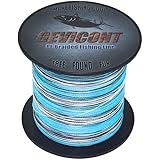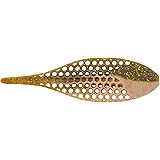Primitive Survival Skills: Mastering Cooking Meat on a Rock
In the realm of wilderness survival, the ability to procure and prepare food is paramount. While modern camping often involves lightweight stoves and sophisticated cookware, true primitive survival demands a deeper connection to nature’s resources. The silent demonstration in the video above powerfully illustrates one of the oldest and most effective methods for cooking meat in the wild: hot stone cooking.
This ancient technique, known as cooking meat on a rock, strips down the culinary process to its bare essentials. It offers a unique blend of simplicity and efficiency, providing nourishment when conventional tools are unavailable. Understanding this fundamental skill can be a game-changer for anyone venturing into the outdoors, whether for adventure or in a true survival scenario.
The Enduring Art of Hot Stone Cooking
Hot stone cooking, sometimes referred to as ‘stone griddle’ cooking, has been practiced by cultures across the globe for millennia. Imagine our ancestors, perhaps after a successful hunt, transforming their catch into sustenance using only fire and stone. This method is not merely a historical curiosity; it is a vital skill for anyone committed to primitive survival.
The beauty of this technique lies in its reliance on readily available natural materials. There’s no need for pots, pans, or elaborate setups; simply a suitable stone and a heat source. This makes it an ideal method for wilderness survival, where resourcefulness is key.
Why Cook on a Rock in the Wild?
Choosing to cook on a rock when other options might seem available comes with distinct advantages. For instance, this method provides a stable and even cooking surface that retains heat remarkably well. A properly heated stone can cook food thoroughly, often imparting a unique, earthy flavor that complements wild game.
Furthermore, hot stone cooking reduces the need for direct flame exposure, minimizing the risk of burning your food. It also allows for efficient use of fuel, as the retained heat continues to cook long after the main fire has died down. This makes it a sustainable choice for primitive cooking.
Selecting Your Wilderness Cookware: The Right Rock Matters
The success and safety of cooking meat on a rock hinge entirely on choosing the correct stone. Not all rocks are created equal, and some can be extremely dangerous when subjected to intense heat. Consider a rock like a delicate piece of pottery; heating it too quickly or unevenly can cause it to crack or even explode.
Crucially, avoid river rocks or any rocks found in wet areas. These often contain trapped moisture, which turns to steam when heated, causing the rock to fracture violently. Similarly, porous rocks like sandstone, shale, or limestone are generally poor choices as they can crumble or absorb too much moisture.
Instead, look for dense, non-porous igneous or metamorphic rocks such as granite, slate, or basalt. These rocks are typically more stable under heat. Always perform a “test heat” on any chosen rock away from your main cooking area and shelter before placing food on it.
Building the Primitive Kitchen: Fire and Heat Management
The foundation of effective hot stone cooking is a robust fire designed to heat your chosen rock. Build a substantial fire using dry hardwoods if possible, as these burn hotter and longer. Position your chosen cooking stone directly within the hottest part of the fire, or place coals on top of it, to allow for slow and even heating.
The goal is to get the rock uniformly hot, not just scorched on one side. This process can take a significant amount of time, often 30 minutes to an hour, depending on the rock’s size and density. A simple test for readiness involves dripping a few drops of water onto the surface; if it sizzles and evaporates quickly, the rock is likely hot enough.
Preparing Your Wild Feast: Meat and Seasoning
Once your stone is primed, attention turns to the meat itself. In a primitive survival situation, your options might be limited to wild game or fish. Cut your meat into relatively thin, even pieces to ensure consistent cooking. Thicker cuts will require more time and more sustained heat.
Seasoning options in the wild are naturally sparse, but they exist. For example, some edible wild plants like wild garlic, wild onion, or various herbs can add flavor. Even a simple rub of ashes from a hardwood fire can impart a smoky taste and aid in tenderizing. Simplicity is the key here; focus on cooking the meat thoroughly and safely.
The Cooking Process: From Stone to Sustenance
Carefully transfer your heated rock from the fire to a stable, flat surface using sturdy sticks or natural tongs. If ashes or debris have accumulated on the surface, gently brush them away. Lay your prepared meat directly onto the hot stone, much like placing it on a griddle.
Listen for the satisfying sizzle as the meat makes contact with the hot surface. This is a sign that the cooking process has begun effectively. Monitor the meat closely, turning it periodically to ensure even cooking on all sides. The natural juices will begin to render, signaling progression.
Cooking times will vary depending on the meat type, thickness, and the rock’s heat. Observe the color and texture; a properly cooked piece of meat will be firm and have reached a safe internal temperature. The hot rock serves as a natural cooking surface, much like a cast-iron skillet, making this primitive cooking method incredibly intuitive.
Beyond the Basics: Primitive Food Safety
Food safety remains paramount even in a primitive context. Thoroughly cooking meat is crucial to eliminate harmful bacteria and parasites that might be present in wild game. Unlike a modern kitchen with thermometers, you must rely on visual cues and experience. Ensure the meat is cooked through, with no pink remaining in the center.
Avoid cross-contamination by keeping raw meat separate from cooked meat and any other food items. If water is available, clean your hands and any tools you’re using as best as possible. The goal of primitive cooking isn’t just to eat, but to eat safely and avoid illness, which can be devastating in a survival situation.
Other Primitive Cooking Methods
While cooking meat on a rock is an excellent starting point, other primitive cooking methods also offer valuable alternatives. Pit cooking, for example, involves burying food with hot coals and earth, allowing it to slow-cook for hours. This is excellent for larger cuts of meat or root vegetables.
Spit roasting over an open fire is another classic, requiring a rotating spit made from green wood. Stone boiling involves heating rocks in a fire and then dropping them into a container of water to boil food. Mastering these diverse primitive cooking techniques significantly enhances one’s self-reliance and bushcraft skills, making cooking meat on a rock just one piece of the broader survival puzzle.











